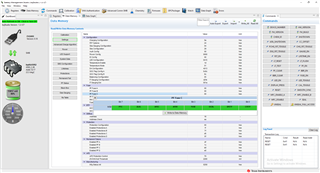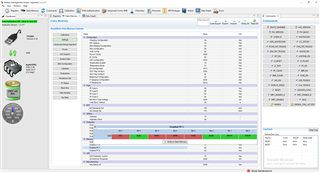Other Parts Discussed in Thread: BQSTUDIO
Tool/software:
In the BQ40Z50-R2 Reference Manual (SLUUBK0B) on page 24 it says
The FUSE pin is driven high if configured for specific failures and Voltage() is above Min Blow Fuse Voltage or there is a CHG FET (CFETF) or DSG FET (DFETF) failure.
Does this statement mean a CFETF or DFETF Permanent Failure will drive the FUSE pin high regardless of the settings in the PF Fuse C register? IOW, the fuse blowing is conditional on the Enabled PF C register but not the PF Fuse C register?
Or does it mean that a CFETF or DFETF (if enabled in Enabled PF C and PF Fuse C registers) will drive the FUSE pin high regardless of the Voltage()? IOW, CFETF and DFETF bypass the Voltage() check?
To ask it a different way, which of these modified versions of the text from the Reference Manual is correct?
1. The FUSE pin is driven high if (configured for specific failures and Voltage() is above Min Blow Fuse Voltage) or (there is a CHG FET (CFETF) or DSG FET (DFETF) failure).
2. The FUSE pin is driven high if (configured for specific failures) and (Voltage() is above Min Blow Fuse Voltage or there is a CHG FET (CFETF) or DSG FET (DFETF) failure).
I think the second interpretation is correct, but just want to confirm. When I first read the statement in the RM, I interpreted it the first way, which implies I should not enable/use the CFETF/DFETF Permanent Failures until I am ready to blow fuses.



